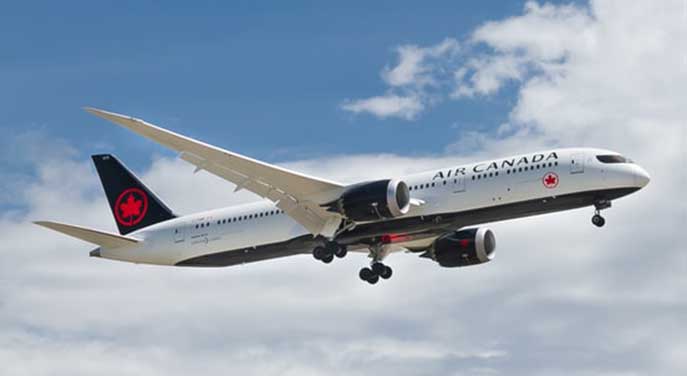 A year and a half into the COVID-19 pandemic, the only thing keeping Air Canada alive is the federal government bailouts. They’re delaying the inevitable and sensible way out: cutting travel restrictions, encouraging tourism by ensuring effective containment and encouraging vaccination.
A year and a half into the COVID-19 pandemic, the only thing keeping Air Canada alive is the federal government bailouts. They’re delaying the inevitable and sensible way out: cutting travel restrictions, encouraging tourism by ensuring effective containment and encouraging vaccination.
In April, the government granted the firm another $5.9-billion loan to keep it afloat until passengers can start flying again. Air Canada has vowed to refund ticket holders, restore regular services in airports, and hire back laid-off personnel when normalcy returns.
Unlike with previous loans, the federal government is now a shareholder of the company. It disbursed $500 million to purchase shares at $23 each as a way to guarantee repayment. The price per share before the pandemic was $50.
Finance Minister Chrystia Freeland has argued taxpayers will benefit from stock returns as vaccinations rise and restrictions ease. However, Air Canada’s recovery looks distant. As tourism remains dormant – particularly with all of the spillover effects for the rest of the economy – taxpayers continue to foot a ballooning bill.
In 2020, Air Canada shrunk its workforce by more than 50 per cent, cut salaries and received an emergency subsidy to keep the rest of its payroll. In 2021, while the rest of the world overcomes the pandemic and opens up, the unprofitable company will rely on aid to survive another year.
 Air Canada’s passenger load declined by 73 per cent in 2020, resulting in a $4.65-billion loss for the company. It recorded a profit of $1.48 billion in 2019.
Air Canada’s passenger load declined by 73 per cent in 2020, resulting in a $4.65-billion loss for the company. It recorded a profit of $1.48 billion in 2019.
With a revenue drop of 50 per cent, the airline was unable to meet its obligations. Air Canada fired around 200,000 workers and reduced the salaries of 3,200 management employees.
The two highest executives also waived all their wages for April, May and June of 2020 and halved their salaries for the next six months. Three other executives cut their wages in half for the first three months of 2020 and received a 20 per cent haircut for the rest of the year.
Air Canada also delayed paying financial liabilities. For instance, the United States Treasury Department recently filed a complaint against the company due to delays in client refunds. The U.S. government sought a US$25.5-million fine for the delays.
Although the company achieved $1.7 billion in savings in 2020 and decreased its planned capital spending from 2020 to 2023 by $3 billion, Air Canada is still on the tightrope.
According to its September 2020 balance sheet, Air Canada was $26.84 billion in debt, of which $7.24 billion was due within a year. Liabilities outweighed the sum of Air Canada’s cash and near-term receivables by $18.6 billion.
In light of the risky debt increase, Fitch Ratings downgraded the company’s long-term issuer default score to B+ from BB-. The rating agency forecasts Air Canada’s debt to increase until 2022 and revenues to remain below 2019 levels until 2024.
Fitch Ratings pointed out that leisure travel has the potential to trigger recovery. U.S.-focused carriers have performed better than Air Canada because of their higher exposure to business, interstate and international travel.
Air Canada’s lesson in how not to communicate with customers by David Fuller
Rather than subsisting on government aid, Air Canada should be urging government officials to ease travel restrictions since the industry can no longer withstand grounding most of its aircraft.
According to Statistics Canada, travel restrictions reduced gross domestic product for the tourism industry by nearly half in 2020. Tourism jobs fell by 28.7 per cent.
Travel restrictions also led to significant losses in other industries. They resulted in a reduction of at least 1.2 per cent of Canada’s gross domestic product and the loss of up to 500,000 jobs.
Issuing debt and getting new liabilities without sufficient operating cash flows is only postponing an inevitable default. If Air Canada’s managers stand by idly, taxpayers will bear the brunt.
Thousands of jobs and businesses that have been able to survive until now are at stake too. Officials can’t delay the decision any longer because recovery is not immediate.
Air Canada would need to first pay off looming liabilities and incur maintenance costs for grounded aircraft. Only then can the company start to see growing net income and benefit shareholders with higher valuations.
A blank cheque from the federal government is a recipe for stagnation, which is a death knell in a highly competitive industry like aviation.
Unless it can turn this around before other players resume normal travel, Air Canada is on a path to becoming another taxpayer-subsidized white elephant.
Paz Gómez is a research associate with the Frontier Centre for Public Policy.
Paz is a Troy Media Thought Leader. For interview requests, click here.
The Frontier Centre for Public Policy is an independent Canadian public policy think tank. It does not accept any government funding whatsoever. It relies on diversified funding to maintain its independence.
The views, opinions and positions expressed by columnists and contributors are the authors’ alone. They do not inherently or expressly reflect the views, opinions and/or positions of our publication.
© Troy Media
Troy Media is an editorial content provider to media outlets and its own hosted community news outlets across Canada.


